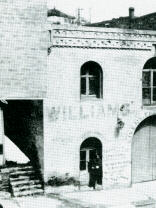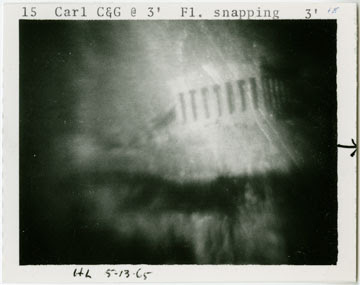There's area of ITC (Instrumental Transcommunication), that's call "Thought Photography" and a good example of this is shown in the video below of a Japanese teenager who is doing a demonstration of this.
http://paranexus.org/parapedia/index...ht_Photography
"In the 1970’s, the Japanese Nengraphy Association (nengraphy being the Japanese name for thoughtography) conducted experiments with the Japanese teenage psychic wonder, Masuaki Kiyota. He proved to have the ability to transmit images on to unexposed film under strict scientific conditions. [10] Dr. Walter Uphoff supervised a series of experiments with Kiyota under laboratory conditions in Tokyo, as well as in the United States for a special NBC-TV program on the paranormal. He was able to produce photographs of a nearby hotel and other images using a Polaroid camera, even though it was placed on a table across from him with its’ lens cap on, and the shutter release never touched."
In this thread, I'll post some more information on some other examples of 'thought photography'. What I find interesting about this phenomenon is that there are times when things show up on film for those who can do this sort of thing that were not things they were focusing on before and during the experiment. Some can say that the phenomenon also taps into ones unconscious mind and that those things that show up that were not focused on could be from that level instead... for the experimenter.
Then there are cases when things show up that are somewhere within the vicinity of where the experiment is taking place.. like buildings or street views, for example. The experimenter will not be focusing on such things at all yet they still show up in the undeveloped film that they focused on. Sometimes what shows up is not even anywhere near where the experimenter is taking place... i.e. a building or scene from some other place clear across the world or even "time".
Then there are times when things show up that are actually part of photographs taken previously by others that are seen books (but not always because sometimes they are isolated photo's or photographic material of one sort or another). This part of the phenomenon indeed brings up accusations of fraud yet, it's just another weird aspect of this phenomenon too. What's even stranger about this is that the experimenter claims that they have never even seen the book before and had no prior knowledge of its existence and that the same photo that showed up in his experiment, was to be found in the book. I run across this aspect of this phenomenon a few times and needless to say it's very embarrassing for the experimenter/psychic photographer because such evidence like that definitely points in the direction of fraud, but because there have been a number of incidents like this among those who are good at thought photography and paranormal photography, those of us who study such material have been willing to give some of those psychics who have had that happen before the benefit of the doubt especially for those who have clearly demonstrated their abilities in thought photography or paranormal photography already for several years.
In my own view, in cases like what's described in the above paragraph, I'm not ruling out that those spirits whom the psychic photographer is consciously or unconsciously working with, actually goes to a book or a photo somewhere and then impresses that image onto the film. So in that case, it was the spirit (or a being from those realms outside of our own) that was using psychokinesis to impress that image onto the film in the experiment and not experimenter himself and it's not unlike how apports show up in legitimate seances
At any rate, we are, afterall, dealing with the paranormal which means that we don't make the rules because there are other forces out there that are calling the shots. This means that 'anything' can happen and anything is possible. That is the nature of Fortean Phenomenon's.





 Reply With Quote
Reply With Quote












